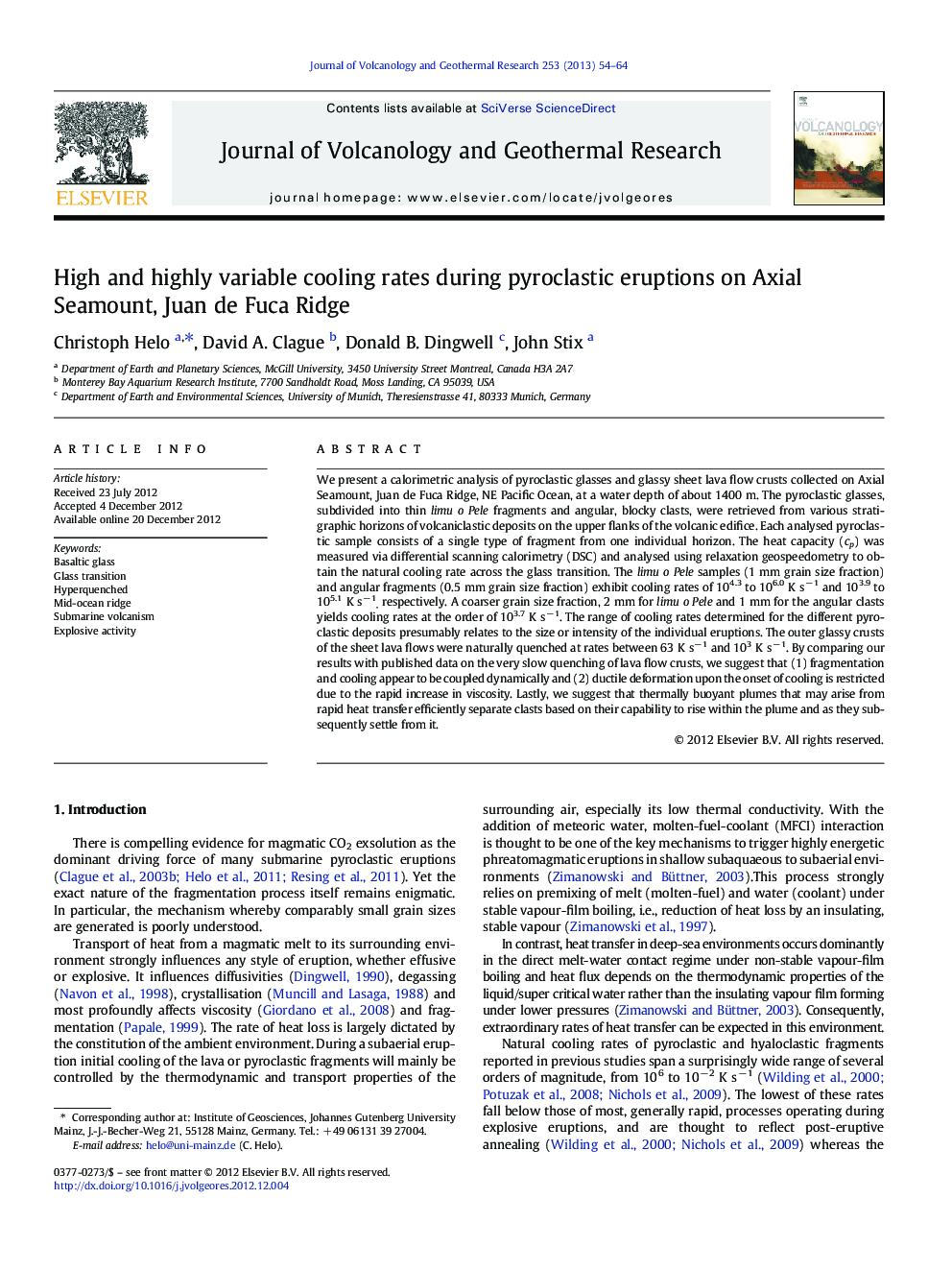| Article ID | Journal | Published Year | Pages | File Type |
|---|---|---|---|---|
| 4713468 | Journal of Volcanology and Geothermal Research | 2013 | 11 Pages |
We present a calorimetric analysis of pyroclastic glasses and glassy sheet lava flow crusts collected on Axial Seamount, Juan de Fuca Ridge, NE Pacific Ocean, at a water depth of about 1400 m. The pyroclastic glasses, subdivided into thin limu o Pele fragments and angular, blocky clasts, were retrieved from various stratigraphic horizons of volcaniclastic deposits on the upper flanks of the volcanic edifice. Each analysed pyroclastic sample consists of a single type of fragment from one individual horizon. The heat capacity (cp) was measured via differential scanning calorimetry (DSC) and analysed using relaxation geospeedometry to obtain the natural cooling rate across the glass transition. The limu o Pele samples (1 mm grain size fraction) and angular fragments (0.5 mm grain size fraction) exhibit cooling rates of 104.3 to 106.0 K s− 1 and 103.9 to 105.1 K s− 1, respectively. A coarser grain size fraction, 2 mm for limu o Pele and 1 mm for the angular clasts yields cooling rates at the order of 103.7 K s− 1. The range of cooling rates determined for the different pyroclastic deposits presumably relates to the size or intensity of the individual eruptions. The outer glassy crusts of the sheet lava flows were naturally quenched at rates between 63 K s− 1 and 103 K s− 1. By comparing our results with published data on the very slow quenching of lava flow crusts, we suggest that (1) fragmentation and cooling appear to be coupled dynamically and (2) ductile deformation upon the onset of cooling is restricted due to the rapid increase in viscosity. Lastly, we suggest that thermally buoyant plumes that may arise from rapid heat transfer efficiently separate clasts based on their capability to rise within the plume and as they subsequently settle from it.
Graphical abstractFigure optionsDownload full-size imageDownload as PowerPoint slideHighlights► Thermal history of basaltic glass from explosive and effusive mid-ocean ridge eruptions. ► Extremely rapid quenching is achieved during submarine explosive activity. ► Cooling and magma fragmentation are dynamically coupled. ► Mutual influences of heat loss and eruption dynamics are explored.
